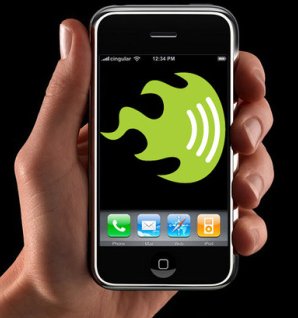 The world of web search relies a lot of Google's PageRank technology, and until semantic web comes into existence, feeble efforts by Ask may not be able to compete with the PR concept. But the one area where google lacked its credibility was in image search. Using the title or alternate-text associated with images is not exactly the most efficient way to conduct image search. However, Google researchers say they have a software technology intended to do for digital images on the Web what the company’s original PageRank software did for searches of Web pages, which may be the first prototype of this kind that has VisualRank for Images.
The world of web search relies a lot of Google's PageRank technology, and until semantic web comes into existence, feeble efforts by Ask may not be able to compete with the PR concept. But the one area where google lacked its credibility was in image search. Using the title or alternate-text associated with images is not exactly the most efficient way to conduct image search. However, Google researchers say they have a software technology intended to do for digital images on the Web what the company’s original PageRank software did for searches of Web pages, which may be the first prototype of this kind that has VisualRank for Images.As stated in a recent article in NY Times, two Google scientists presented a paper describing what the researchers call VisualRank, an algorithm for blending image-recognition software methods with techniques for weighting and ranking images that look most similar. The prototype solution was demonstrated at the International World Wide Web Conference in Beijing.
Although image search has become popular on commercial search engines, results are usually generated by using text associated with images rather than the image itself. Image analysis remains a largely unsolved problem in computer science, and though automatic face detection has seen some light of the day, finding other objects such as mountains, landscape or small objects is still a challenge.
"We wanted to incorporate all of the stuff that is happening in computer vision and put it in a Web framework," said Shumeet Baluja, a senior staff researcher at Google, who made the presentation with Yushi Jing, another Google researcher. The research paper, "PageRank for Product Image Search", is focused on a subset of the images that the giant search engine has cataloged because of the tremendous computing costs required to analyze and compare digital images. The company said that in its research it had concentrated on the 2000 most popular product queries on Google’s product search, words such as iPod, Xbox and Zune. It then sorted the top 10 images both from its ranking system and the standard Google Image Search results. With a team of 150 Google employees, it created a scoring system for image "relevance". The retrieval returned 83 percent less irrelevant images than those based on text.
Google is not the first into the visual product search category. Like.com, started in 2006, offers a service that refers users to shopping sites, makes it possible for a Web shopper to select a particular visual attribute (ability to match shapes and objects rather than text), such as a certain style of brown shoes or a style of buckle, and then be presented with similar products available from competing Web merchants.
We all know that an enhanced image search is definitely required, and the current search technique based on text is not 100% accurate. But with the imperfect image-recognition techniques currently available, does Google's claim see too tall?? And will this be a scalable solution, considering the large amount of images foound on the web? VisualRank sure seems like adding value to the quality of image search, but seeing this implemented is something I'd like. However, i hope Google would focus more on semantic web first so web search can get more meaningful!
If you liked this post, please subscribe to our feed so you'd never miss an article again!











No comments:
Post a Comment